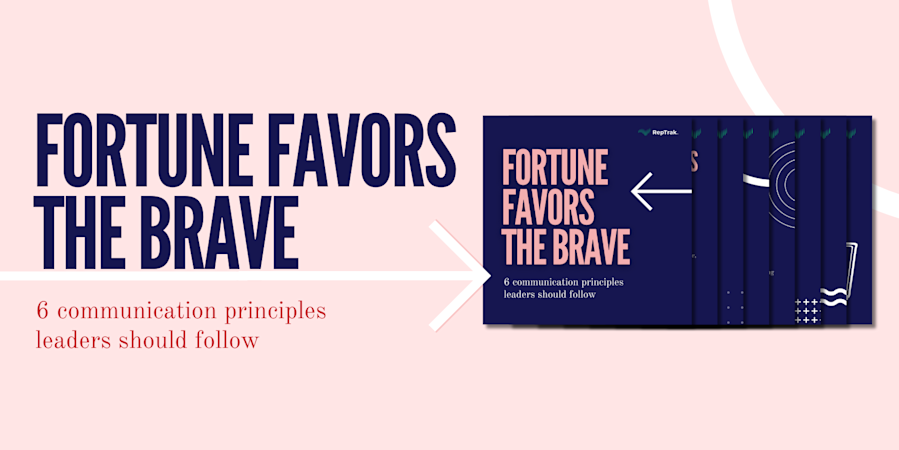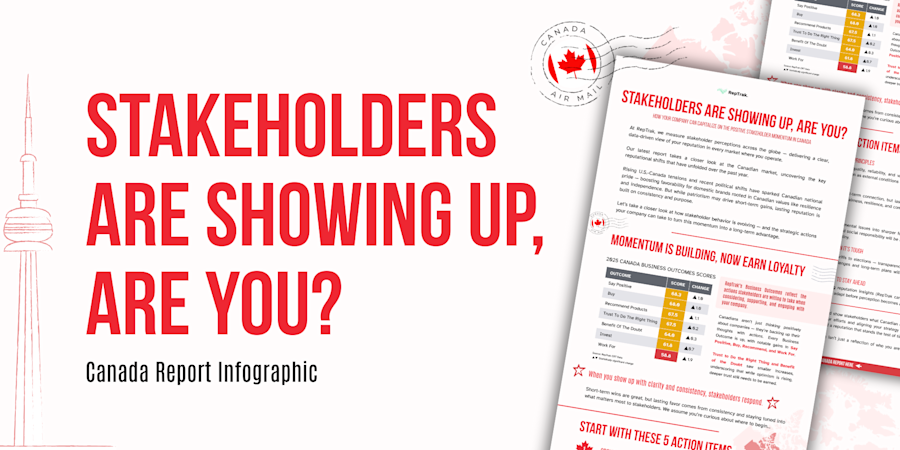3 Communication Best Practices to Align Brand and Reputation
Blog Post01 Mar, 2021
Throughout the COVID-19 pandemic, the food and beverage industry has struggled to survive. Research from Yelp suggests that 60% of closed restaurants will never reopen, and even the world’s biggest chains are finding it challenging to stay afloat. Starbucks, for instance, suffered a 40% sales decline in the third quarter of 2020 as workers and travelers switched to home-brewed coffee.
In the face of tremendous uncertainty, it would be understandable if the coffee giant decided to cut costs wherever possible. However, Starbucks chose a different route from the start, announcing new mental health resources for all U.S. employees and their eligible family members in March 2020. From a company that’s already known for generous benefits like free tuition and stock options, this an important business lesson: Corporate reputation is important in both good and bad times.
How to Improve Corporate Reputation Through Strategic Communication
If you’ve been in a brand strategy session, you know how much time and money the average company invests in its identity (e.g., logos, packaging, advertising, etc.) to connect with audiences. But it’s common for an organization to neglect its corporate reputation, which is how investors, consumers, and other stakeholders interpret its actions, communications, and ability to deliver value.
Your brand is the promise your company makes, and your reputation is your ability to keep that promise. Organizations have historically invested more in their brands, resulting in strong brand scores but poor corporate reputations. The good news is that you can align the two and improve your company’s business outcomes through strategic communication. To get started, follow these three communication best practices:
1. Be consistent, honest, and proactive.
At RepTrak, we discovered that companies with constant communication are seen as more trustworthy. People are more likely to give you the benefit of the doubt if you’re communicating regularly and proactively about what’s going on. Just remember that your company updates won’t always contain good news, especially during a global health crisis.
When the World Health Organization declared the coronavirus a pandemic, Airbnb made the difficult decision to allow all guests to cancel their reservations for a full refund. This notice was undoubtedly difficult for hosts to hear, but Airbnb’s email explained that forcing customers to stick to their travel plans would be bad for public health. In the end, the difficult decision demonstrated the company’s responsibility. If you can show people that you’re acting in their best interests, then it’ll improve the public perception of your company.
2. Talk about your ESG initiatives.
In an episode of the “Inside the Strategy Room” podcast, McKinsey’s Robin Nuttall explains that most academic studies on environmental, social, and corporate governance identify a positive correlation between ESG scores and financial performance. ESG initiatives are good for business, but they can go from good to groundbreaking with the right communications strategy.
Today, ESG is the primary driver of consumer sentiment. This isn’t surprising when you consider the attention people pay to environmental issues, employee health and safety, and social justice. Regardless of whether they’re aware of it, consumers evaluate these factors when deciding where to shop, what to buy, and even where to work. To fully capitalize on your organization’s ESG initiatives, you need to tell people what you’re doing and why you’re doing it.
3. Use earned media to boost credibility.
The content marketing revolution was a significant shift from traditional advertising strategies. Many brands went all-in on owned media like blog posts, white-papers, and social media. Although owned media gives you granular control over your messaging, it doesn’t carry the same credibility as a third-party source.
Our research shows that companies experience bigger reputation boosts when people learn about their decisions from traditional media outlets. If you want to prioritize earned media, try sending press releases to news websites and building relationships with other media publications and influencers. You might not completely control the narrative, but it will help people trust your company more.
It takes a concerted communications strategy to improve and manage your corporate reputation. By following these three communication best practices, you can align your brand and reputation and reap the benefits of enhancing your company’s public perception.






